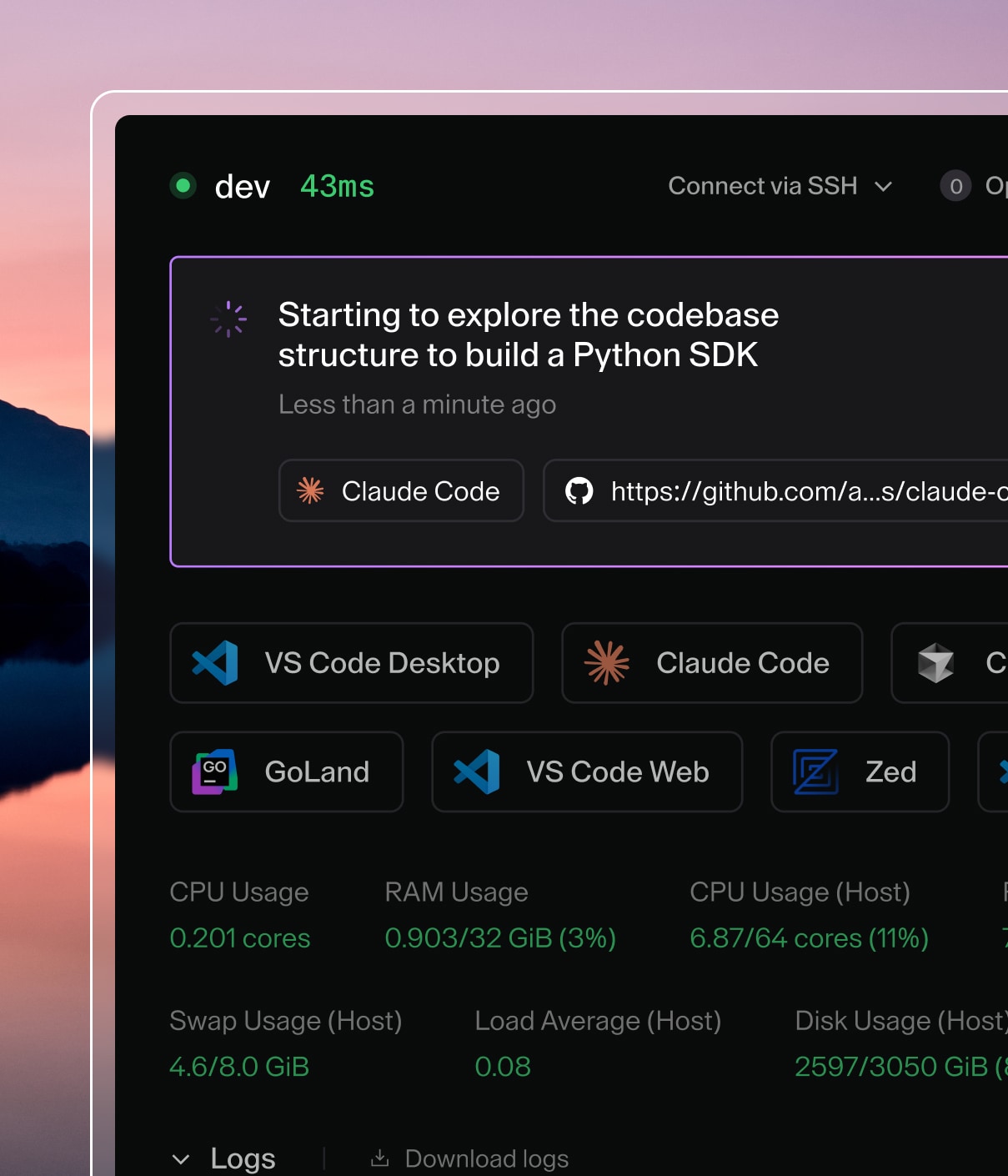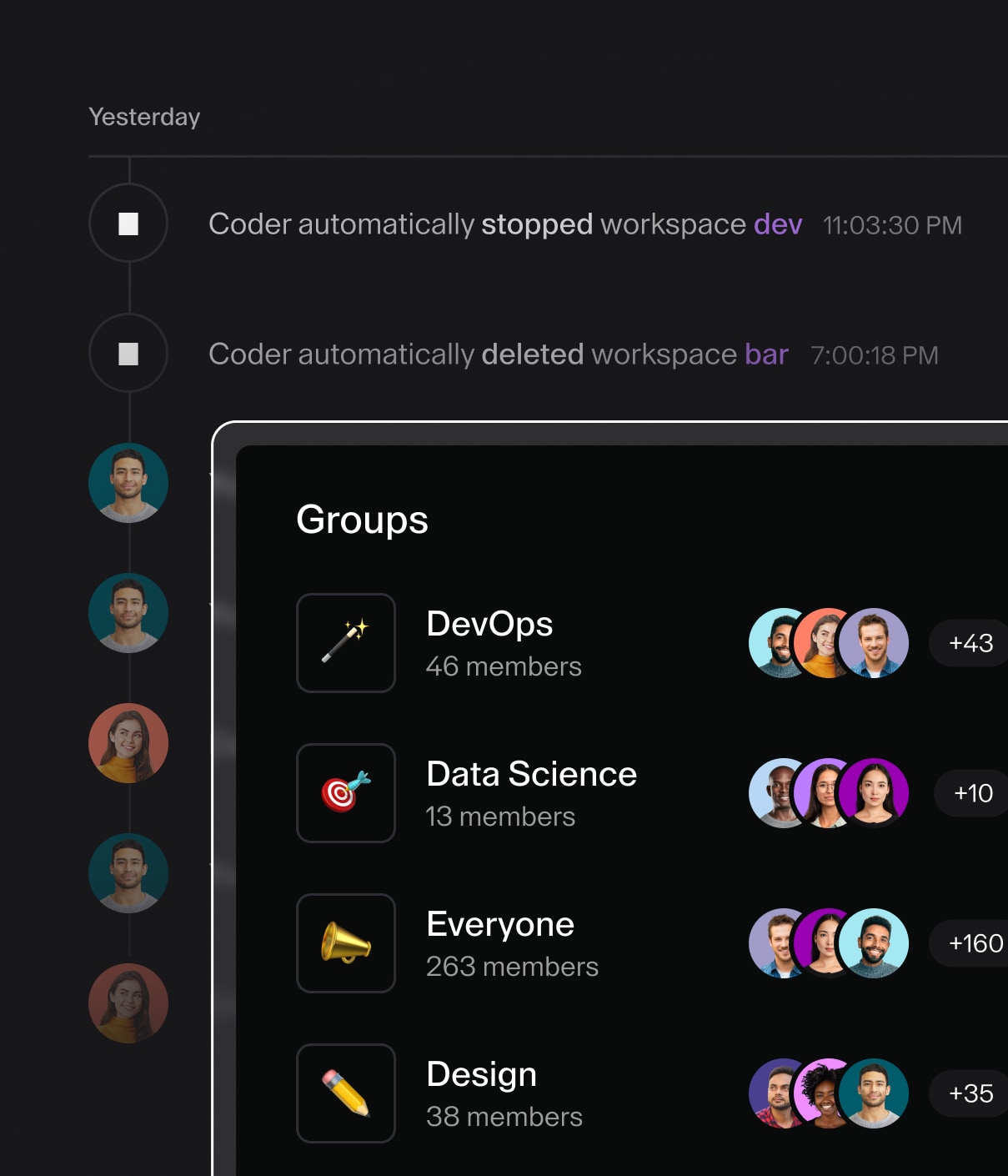Up to 10,000 Users
Caution
This page is a work in progress.
We are actively testing different load profiles for this user target and will be updating recommendations. Use these recommendations as a starting point, but monitor your cluster resource utilization and adjust.
The 10,000 users architecture targets large-scale enterprises with development teams in multiple geographic regions.
Geographic Distribution: For these tests we deploy on 3 cloud-managed Kubernetes clusters in the following regions:
- USA - Primary - Coderd collocated with the PostgreSQL database deployment.
- Europe - Workspace Proxies
- Asia - Workspace Proxies
High Availability: Typically, such scale requires a fully-managed HA PostgreSQL service, and all Coder observability features enabled for operational purposes.
Observability: Deploy monitoring solutions to gather Prometheus metrics and visualize them with Grafana to gain detailed insights into infrastructure and application behavior. This allows operators to respond quickly to incidents and continuously improve the reliability and performance of the platform.
Testing Methodology
Workspace Network Traffic
6000 concurrent workspaces (2000 per region), each sending 10 kB/s application traffic.
Test procedure:
- Create workspaces. This happens simultaneously in each region with 200 provisioners (and thus 600 concurrent builds).
- Wait 5 minutes to establish baselines for metrics.
- Generate 10 kB/s traffic to each workspace (originating within the same region & cluster).
After, we examine the Coderd, Workspace Proxy, and Database metrics to look for issues.
API Request Traffic
To be determined.
Hardware recommendations
Coderd
These are deployed in the Primary region only.
| vCPU Limit | Memory Limit | Replicas | GCP Node Pool Machine Type |
|---|---|---|---|
| 4 vCPU (4000m) | 12 GiB | 10 | c2d-standard-16 |
Provisioners
These are deployed in each of the 3 regions.
| vCPU Limit | Memory Limit | Replicas | GCP Node Pool Machine Type |
|---|---|---|---|
| 0.1 vCPU (100m) | 1 GiB | 200 | c2d-standard-16 |
Footnotes:
- Each provisioner handles a single concurrent build, so this configuration implies 200 concurrent workspace builds per region.
- Provisioners are run as a separate Kubernetes Deployment from Coderd, although they may share the same node pool.
- Separate provisioners into different namespaces in favor of zero-trust or multi-cloud deployments.
Workspace Proxies
These are deployed in the non-Primary regions only.
| vCPU Limit | Memory Limit | Replicas | GCP Node Pool Machine Type |
|---|---|---|---|
| 4 vCPU (4000m) | 12 GiB | 10 | c2d-standard-16 |
Footnotes:
- Our testing implies this is somewhat overspecced for the loads we have tried. We are in process of revising these numbers.
Workspaces
These numbers are for each of the 3 regions. We recommend that you use a separate node pool for user Workspaces.
| Users | Node capacity | Replicas | GCP | AWS | Azure |
|---|---|---|---|---|---|
| Up to 3,000 | 8 vCPU, 32 GB memory | 256 nodes, 12 workspaces each | t2d-standard-8 | m5.2xlarge | Standard_D8s_v3 |
Footnotes:
- Assumed that a workspace user needs 2 GB memory to perform
- Maximum number of Kubernetes workspace pods per node: 256
- As workspace nodes can be distributed between regions, on-premises networks and cloud areas, consider different namespaces in favor of zero-trust or multi-cloud deployments.
Database nodes
We conducted our test using the db-custom-16-61440 tier on Google Cloud SQL.
Footnotes:
- This database tier was only just able to keep up with 600 concurrent builds in our tests.

